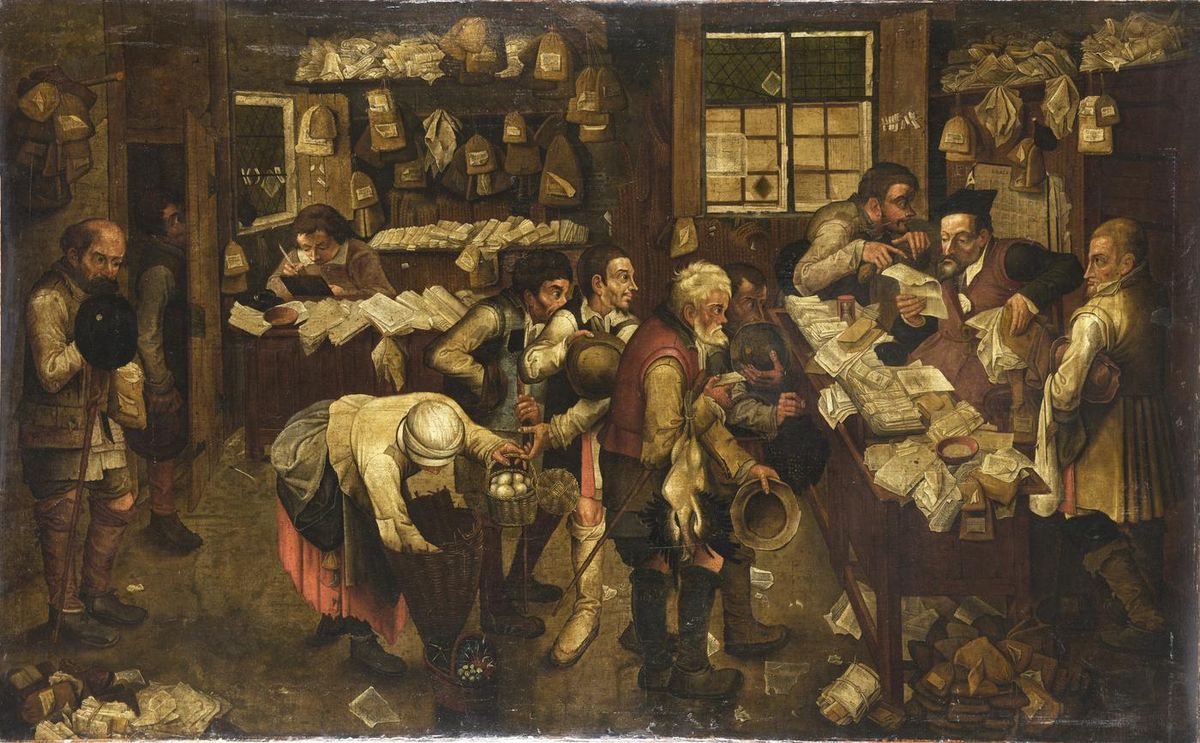A rediscovered work by the Flemish painter Pieter Brueghel the Younger will be offered at auction on 28 March at Hôtel Drouot in Paris, with an estimate of €600,000 to €800,000. The canvas painting, which is dated to between 1615 and 1617, and depicts a village scene, was discovered during an inventory taken last October in the home of a family in France They have declined to reveal their identity or their exact location.
Pieter Brueghel is known for reproducing the works of his father, Pieter Brueghel the Elder. His copies of Winter Landscape with Skaters and Bird Trap (1565)—of which 10 signed and 4 dated—are a case in point. If the subject of The Village Lawyer was not borrowed from Brueghel the Elder, it may have been influenced by the French painter Nicolas Baullery. Either way, art historians interpret it as a satire of the Spanish Netherlands. The composition also has the alternative title of The Tithes Collector.
Speaking about the work's consignors, the Drouot auctioneer Malo de Lussac says: “[The family] have been calling it ‘The Brueghel’ for over a century, because they were not sure of its authenticity”. De Lussac led the inventory check that took place in their home.
Brueghel’s works measure on average between 21.6 to 29.5 inches high and 39.3 to 78.7 inches wide. This oil on canvas is notably larger, measuring at 44 inches high and 72.4 inches wide. “The discovery of such a format brings out many details—the dirt under some’s nails and the fear in the eyes of others. It is in great condition,” de Lussac says.
Another feature of the work which makes it atypical of Brueghel the Younger's style is that was painted on canvas. “The matrix was particularly thick. We thought the work had been transferred from a panel,” de Lussac says. In November, it was taken to the Paris-based authenticators Cabinet Turquin in Paris, where both the founder Éric Turquin and the art expert Stéphane Pinta recognised Brueghel’s craftsmanship. Moreover, Drouot then sent the painting to Germany, where the Brueghel specialist Klaus Ertz subsequently confirmed the authentication in December.
There are around 20 signed versions of The Village Lawyer. Some are on canvas and some are on copper, including one at the German History Museum in Berlin. Others are on panels, such as those in the Royal Museum of Fine Arts in Antwerp and in Maastricht at the Bonnefantenmuseum. Only one, dated from 1617 and held in a private collection, shares the exact same dimensions as De Lussac’s find.
This composition has two variations. The newly discovered painting belongs to a first series started in 1615. After 1618, the braided ropes covering the back wall were replaced by a black sheet and the far-left character’s light-coloured shirt was turned red.


